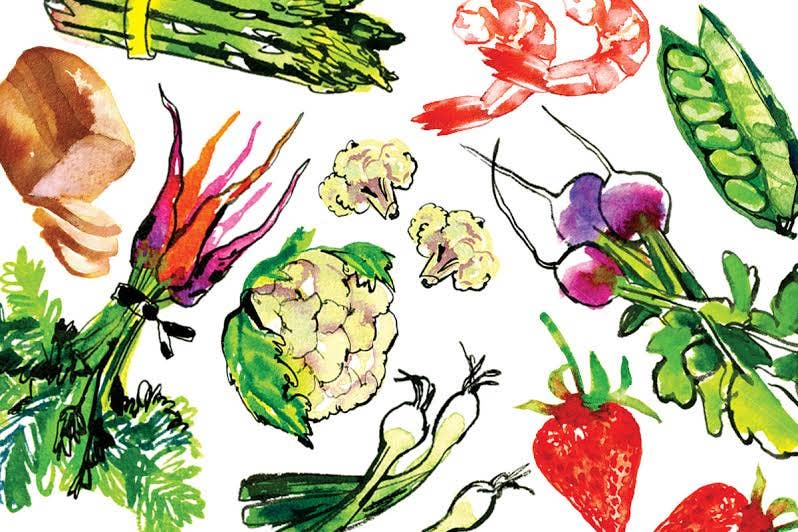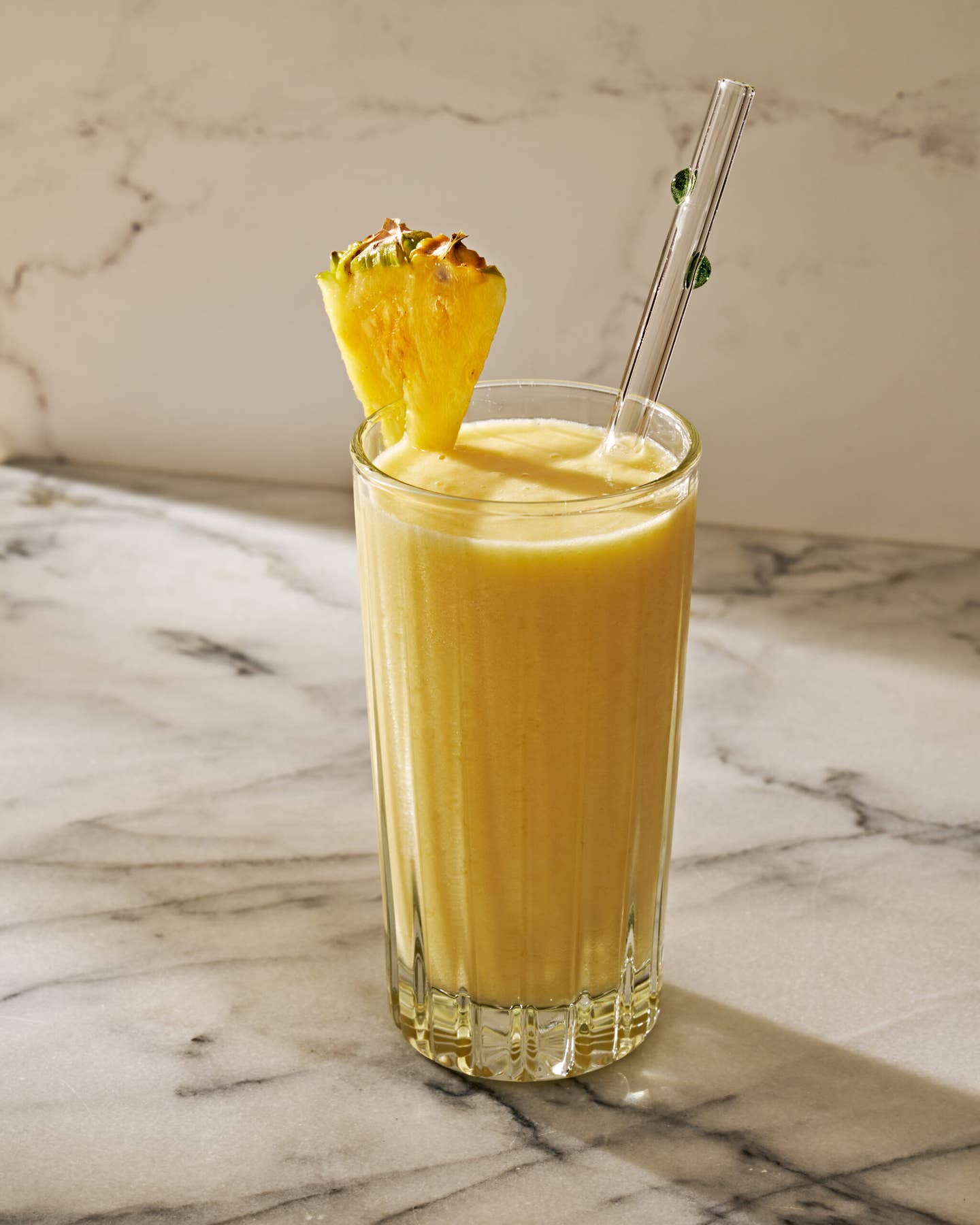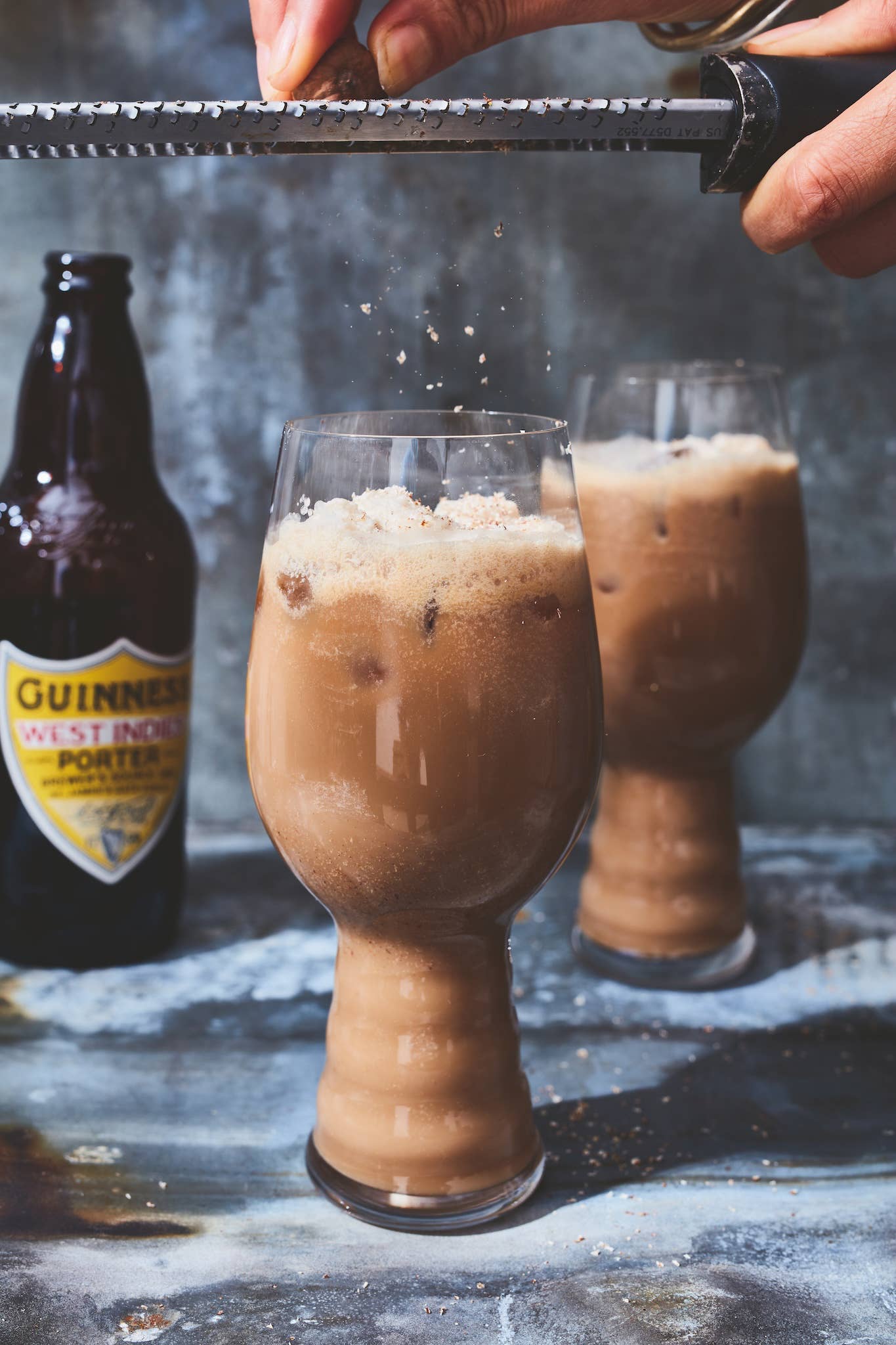
Red of the Country
The rain started falling sometime between the lentil soup and the milk-fed lamb. In the valley surrounding the Duero River in northwestern Spain—the Ribera del Duero—a storm can roll in over a hillside without warning and stain the sky black in minutes. When it happened, I was sitting inside the miniature palace that contains the tasting room, kitchen, and executive dining area of the Vega Sicilia winery, which makes some of the best red wines in the world. I was drinking and talking between gapes at a Goya on the wall that may well have been an original. Suddenly, I remembered that I had left the windows of my rental car open. I would have gotten up from the table to close them, but in front of me were two vintages of Vega Sicilia's top-of-the-line Unico, the 1974 and the 1970. The former was intensely flavored and extraordinary; the latter, which the winery released only in March of 1995, after it had spent nearly a quarter-century aging in both barrel and bottle, was the finest wine I have ever tasted—dark, huge, and fruity, with a complexity on the palate that I had never before encountered. Let it rain, I decided. I wasn't about to leave the table.
But such compromises are unnecessary at Vega Sicilia. Within moments of the downpour's onset, an employee of the winery stepped up to assure me that my windows had been closed by the maintenance men during their check of the parking lot. Mariano Garcia, who has been Vega Sicilia's winemaker since 1968, must have overheard, because he couldn't hide a smile. He has grown accustomed to such obsession with detail, on a level that only one of the best wineries anywhere can afford.
For more than a century, since Don Eloy Lecanda planted vine cuttings from Bordeaux in this spot near Peñafiel, about 120 miles north of Madrid on the high plains of Castile, in 1864, Vega Sicilia has quietly been making wines that rank with France's best. (Served Vega Sicilia at a reception at the Spanish embassy in London, an unsuspecting Winston Churchill once said, "My vote goes to this unknown claret." He later became an aficionado.) The company has never advertised, and exports only about 17 to 20 percent of its tiny output—estimated at about 240,000 bottles annually, including both the Unico and a lower-priced but still expensive "second wine" called Valbuena. The total production of the 1970 Unico—the wine is a blend of (mostly) tempranillo, here called tinta del pais ("red of the country" or "local red"), plus some cabernet sauvignon and merlot and a bit of malbec (Don Eloy's Bordeaux grapes) and a trace of a minor Spanish variety called albillo—was about 94,000 bottles. The entire vintage was sold to presubscribed customers, private and commercial, in Spain and abroad. The waiting list to become part of this privileged number for future releases is four years.
Until 1982, the Ribera del Duero operated outside the Spanish government's Denominacion de Origen (D.O.), or appellation, system. The region was best known for its modest roses, and only Vega Sicilia and two other firms, Protos and Torremilanos, had made ambitious red wines there.
When the D.O. was finally granted to the region, Vega Sicilia joined only after much hesitation. "If it wasn't for us," says Pablo Alvarez, who runs Vega Sicilia for his father, multimillionaire businessman David Alvarez Diaz (who bought the estate from the previous owners in 1982), "the D.O. probably wouldn't exist. But it doesn't help us. Our clients buy our wine because it says Vega Sicilia, not because it says Ribera del Duero."
The Ribera del Duero is growing. In 1989, for instance, the region exported 5,133 cases of wine to the United States; in 1994, it exported 14,487. This does not make Vega Sicilia happy. "When you sell millions of bottles, it's not so easy to make high-quality wine," sniffs Garcia. Adds Alvarez, "We have grave doubts about the reputation of Ribera del Duero."
Two miles from where we're eating, across the road that runs the length of the Ribera del Duero from Valladolid to Soria, stands the source of much of their concern—the Viña Mayor winery, which produces about 1.6 million bottles a year. A subsidiary of Madrid's Entrecanales Group (which is in the construction business and owns a frozen-food company and numerous other enterprises), Viña Mayor exports 30 percent of its wine, to some 45 countries, at very low prices. About 50 percent of the Ribera del Duero wine consumed in America in 1995 came from Viña Mayor. Much of this was the winery's basic cosecha (literally "harvest", or wine of the current vintage), priced below $6 in most markets; the winery's high end, its reserva, rarely costs more than $10. Most of the major wine magazines in the U.S. and Britain have, rightfully, designated Viña Mayor as a best buy.
"Vega Sicilia wasn't very happy when we started production here, right down the road," says the winery's export secretary, Montse Minaya, as I tour the facilities—which have little charm, let alone any Goyas. "They gave us a good smile, but bad thoughts. But we're talking about different kinds of wine." "Unfortunately," adds Andres Arribas, Viña Mayor's North American export manager, "the mentalities in Old Castile are very old-fashioned. The jealousy is right on top of the skin, as we say in Spanish. We made a revolution in Ribera del Duero, and that's what the others don't like."
But the proprietors of Vega Sicilia certainly recognize a good business opportunity when they see one. In order to capitalize on the region's new popularity without jeopardizing its elite reputation, the company launched a winery called Alion—whose wine, 100 percent tinta del pais, was released for the first time in 1994, at less than $25 a bottle. The initial offering of about 29,000 bottles sold out upon release. "Alion is owned by Vega Sicilia, but it's apart," says Garcia. "The concept is totally different. What we're trying to do is make a wine for everyone to drink and understand, a wine you can drink or put away. We're not trying to compete with anyone."
That draws a chuckle at Pesquera, where Maricruz Fernandez, daughter of winery founder Alejandro Fernandez, pulls out tasting notes from a Spanish magazine that rates their own wines above Alion. "We haven't noticed any difference in our sales," she tells me, "so I guess it isn't a competitor of ours." Pesquera, one of the oldest of the younger quality wineries in the Duero Valley, released its first full-scale vintage in 1976. Like their counterparts at Vega Sicilia, the Fernandezes aren't thrilled by what their region has become, either. "We don't identify with Ribera del Duero," says Maricruz Fernandez. "There are a lot of wineries here right now, but some are good and some are bad."
The next day, I visit another of the good ones, Perez Pascuas, which started making a wine called Viña Pedrosa—90 percent tinta del pais and ten percent cabernet sauvignon—in 1980. The winery offers a superpremium bottling called Perez Pascuas Gran Seleccion, which would sell for more than $100 in the U.S.—except that the firm's importer refuses to carry it because he doesn't think anybody will buy a little-known Spanish wine at that price. Perez Pascuas is made from 53-year-old tinta del pais vines planted for what was then a cooperative by Mauro Perez—grandfather of the winery's winemaker, Jose Manuel Perez Ovejas, a rising star among Spanish enologists. The wine spends 26 months in barrel and about the same in bottle before release, Perez Ovejas tells me as I taste his wines in a small room on the ground floor of what appears to be a two-story apartment building. "We want to demonstrate to the whole viticultural world that this is an authentic wine, a world-class wine," he continues. "Who can say, not only in Spain but anywhere, that they have a wine made exclusively from 50-year-old vines? It's a Rolls Royce. Vega Sicilia has made a wine the price of Viña Pedrosa [i.e., Alion], and we're now making a wine the price of Vega Sicilia."
When I pull up to Bodegas Ismael Arroyo in Sotillo de la Ribera, where the modestly attractive Mesoneros de Castilla and the classy ValSotillo wines are made, a representative from the local government is inside gathering information for an updated map of the D.O. "I think being identified with Ribera del Duero is important," says Miguel Angel Arroyo. One of the founders of the winery, with his father and brother, he studied tourism in school and knows what marketing can do. "We need that," he adds. "You know, we're not all as well known as Vega Sicilia."
Ismael Arroyo was built on the extraordinarily picturesque site of an old 17th-century winery. Occupying a kind of middle ground between the manicured perfection of Vega Sicilia and the factory-like atmosphere at Viña Mayor, Arroyo produced about a quarter-million bottles in the '90s—roughly 15,000 of which were exported to the United States. Since the winery began production in 1979, it has forged a reputation for making accessible wines of some quality, though perhaps a bit dowdy. (And, unlike many of the region's newer wineries, it still sells the rosado wine, traditional to the region.)
Miguel Arroyo and I sit at a picnic table beside the driveway, eat a meal of roasted lamb and spring vegetables, and drink a ValSotillo that tastes of plums and spice. With a wine this good in front of me, the conflict threatening to tear apart the D.O. seems a distant concern.
Keep Reading
Continue to Next Story










